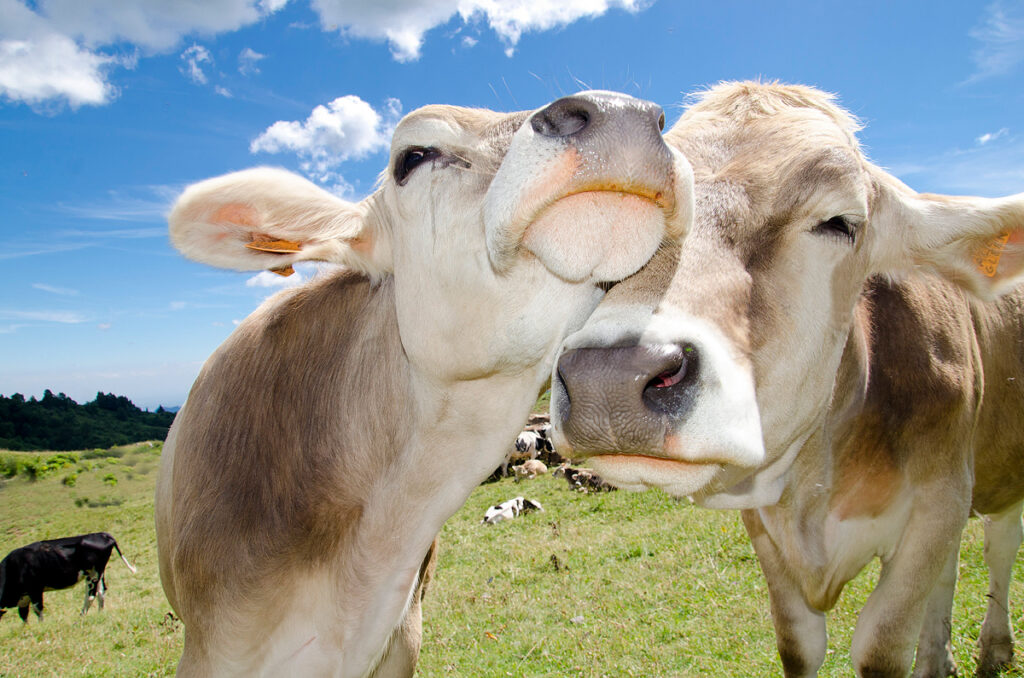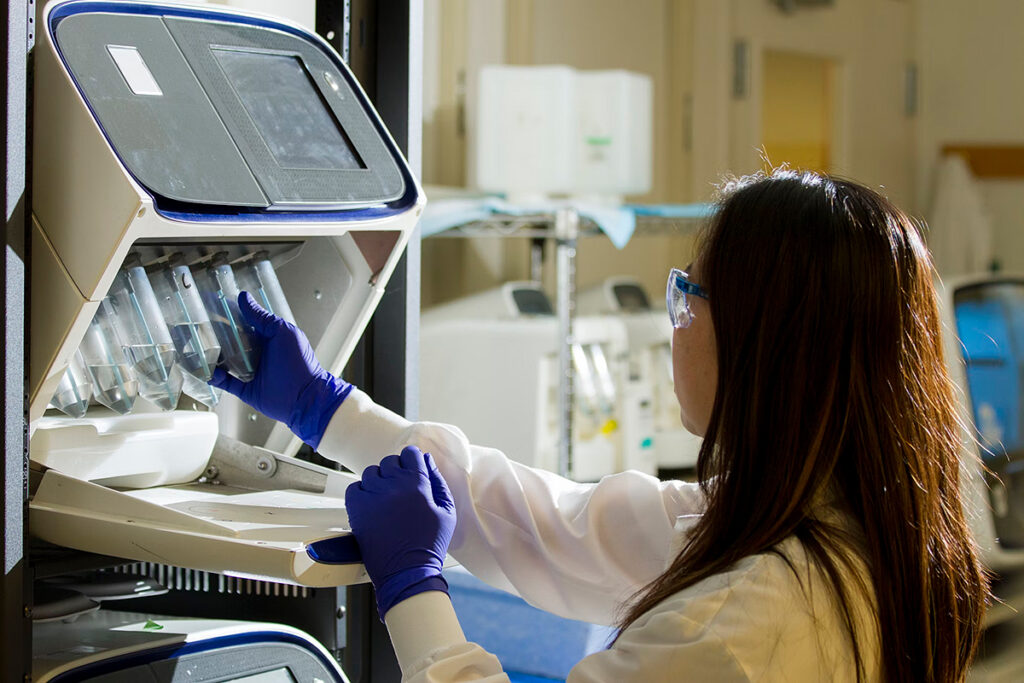Spanish scientists have proposed treating coronavirus with immune milk. Immune milk is obtained from cows that have recovered or have been vaccinated against the bovine coronavirus. The milk of these cows contains antibodies that will provide passive immunity against the SARS-CoV-2 coronavirus.
Passive immunity is formed when a person is injected with antibodies to a disease, but the person himself does not produce them. The newborn acquire passive immunity from the mother through the placenta. Also, passive immunity is received by patients who need immediate protection against a specific disease – these patients are injected with blood products containing antibodies.
The main advantage of passive immunity is that protection occurs immediately, whereas active immunity takes time to develop. However, unlike active immunity, passive immunity only lasts a few weeks or months.
Passive immunity, transmitted through breast milk, protects against most infectious animal diseases and has been well studied for almost all animal coronaviruses. Specific antibodies to the SARS-CoV-2 coronavirus have also been found in human breast milk.
Structure of Coronaviruses
Coronaviruses are divided into three groups: Alphacoronavirus, Betacoronavirus, and Gammacoronavirus. Betacoronavirus has five subgenera, including Sarbecovirus and Embecovirus.
SARS-CoV-2 and SARS-CoV are sarbekoviruses. Moreover, among the embekoviruses, HCoV-OC43 (OC43) should be noted, which causes mild respiratory infection in humans and the bovine coronavirus (BCoV).
The genomes of BCoV and OC43 are 96% similar. There is also a close relationship between antibodies to BCoV and OC43. In contrast, the genomes of SARS-CoV-2 and SARS-CoV are less than 80% identical, although both coronaviruses belong to the same subgenus – sarbekoviruses. With the Middle East respiratory syndrome coronavirus MERS-CoV, the similarity is even less – only 50%.
Structurally, BCoV and OC43 have enveloped viruses composed of five proteins:
- thorn glycoprotein (S);
- shell protein (E);
- membrane protein (M);
- nucleocapsid protein (N);
- protein hemagglutinin esterase (HE).
The structure of SARS-CoV-2 also contains four proteins: S, E, M and N, but it lacks the HE protein.
Bovine Coronavirus Antibodies React to SARS-Cov-2
The dynamics of antibody formation after natural infection is very similar in BCoV and SARS-CoV-2. After infection, various classes of antibodies are produced: IgA, IgM, IgG. These antibodies are directed against multiple structural proteins of the virus.
The most important are antibodies to protein S since this protein is widely present on the viral surface. The S-protein consists of the S1 subunit, which contains the receptor-binding domain (RBD), and the S2 subunit, which facilitates the fusion of viral membranes.
Antibodies directed against RBD are highly neutralizing but differ significantly between BCoV and SARS-CoV-2 as they target different regions of the viral protein.
In contrast, antibodies to the M protein may have cross-immunity to other coronaviruses. Transmembrane protein M is the most abundant structural protein. In coronaviruses, these proteins are similar. Various parts of the M protein elicit a detectable immune response in the serum of SARS and COVID-19 patients. Protein M OC43 opposes the body’s antiviral defenses by affecting various immune systems, while M protein from SARS-CoV-2 has similar effects by blocking the transmission of antiviral signals.
The viral protein N is also similar in some types of coronaviruses. Therefore, antibodies to one virus can react to another virus – they show cross-reactivity. Nevertheless, BCoV and SARS-CoV-2 have different N proteins.
The HE protein, which is not found in other beta-coronaviruses such as SARS-CoV-2, allows BCoV to enter various cell types.
A minor structural protein E is poorly suited for the antibody response.
Cross-reactivity has been found between OC43 and SARS-CoV. It is facilitated by parts of the proteins N, M and S2, which are almost unchanged in beta coronaviruses and SARS-CoV and SARS-CoV-2.
Monoclonal antibodies to SARS-CoV neutralize SARS-CoV-2 through a mechanism not yet known but different from the effect on RBD. Researchers have reported alternative mechanisms for balancing the coronavirus: antibodies to RBD can inactivate protein S by altering its structure.
SARS-CoV-2 and OC43 also have cross-reactivity but limited neutralizing ability. A recent study found that 40-60% of people who were not previously exposed to SARS-CoV-2 have T-helper cells (CD4 +) that respond to OC43. It means that CD4 + cells specific for the common cold beta coronaviruses can also recognize the SARS-CoV-2 coronavirus. This hypothesis is supported by the fact that one in three asymptomatic patients with SARS-CoV-2 coronavirus has antibodies, some of which may be associated with cross-reactivity after exposure to other human coronaviruses, especially OC43, HCoV-229E and HECoV.
For adequate immune protection during infection with SARS-CoV-2, the formation of IgG antibodies (immunoglobulins of class G) against RBD is essential. These specific IgGs should be absent or low in people not exposed to SARS-CoV-2. However, a recent study found that SARS-CoV-2 S2 subunit IgGs were present in most subjects not exposed to this coronavirus. Cross-reactivity with other human coronaviruses may explain this phenomenon. In the same study, patients recovering from COVID-19 were found to have significantly increased levels of OC43-reactive memory B cells, which was not observed in healthy people who were not exposed to SARS-CoV-2.
These data indicate a robust cross-reactivity between SARS-CoV-2 and OC43 at both the cellular and humoral levels. Probably the same will be found for BCoV. No specific cross-reactivity studies have been performed between SARS-CoV-2 and BCoV, but analysis of the SARS-CoV-2 spike protein sequences showed a high similarity (57-83%) with BCoV.
Bovine Coronavirus Antibody Immune Milk Protects Against SARS-CoV-2
Functional foods satisfy nutritional needs, regulate body functions, and have a beneficial effect on specific diseases. Cow’s milk and colostrum contain high levels of bioactive components, including growth factors, immunoglobulins (Ig), lactoperoxidase, lysozyme, lactoferrin, cytokines, nucleosides, vitamins, peptides and oligosaccharides, which are beneficial to human health.
Hyperimmune cow’s milk has long been used for disease prevention. Raw and pasteurized milk can contain specific antibodies against various pathogens and enhance nonspecific antimicrobial factors. Studies have shown that bovine IgG is functionally active throughout the gastrointestinal tract and may prevent infections of the digestive and respiratory tract in humans.
Whole cow’s milk contains more than 30 g / l of protein, of which almost 1 g / l are immunoglobulins, and in colostrum, their content can reach more than 200 g / l. IgG present in cow’s milk withstands gastric acid and is not degraded in the stomach and intestinal tract, retaining its ability to bind to receptors. In addition, serum-derived Ig preparations lead to increased anti-inflammatory cytokines and a decrease in pro-inflammatory cytokines.
Recent studies have confirmed that SARS-CoV-2 RNA lasts longer (more than a month) in the feces of infected people, mainly children, than in nasopharyngeal swabs. The infection period can last longer due to the persistence of the virus in the gut, even if the person is considered harmful after a routine diagnostic test. The presence of specific IgG in the intestinal lumen may help accelerate the elimination of viruses.
To ensure the microbiological safety of milk, ultra-high temperature processing is most commonly used. However, this treatment destroys the immunoglobulins found in milk. Unlike high-temperature processing, pasteurization is a less aggressive heat treatment, providing microbiological safety and retaining most immunoglobulins in milk.
In Spain, most types of pasteurized milk contain antibodies against BCoV due to the high prevalence of infection and the systematic vaccination of cattle. However, heat treatment lowers IgG titers below 30. However, immune milk obtained by hyperimmunized cows using a commercial coronavirus vaccine contains antibodies with titers from 128 to 256. Since antibodies to BCoV react to SARS-CoV-2 when using such milk, these antibodies will pass into the human body and provide passive immunity against coronavirus.
Source
Bovine Coronavirus Immune Milk Against COVID-19



